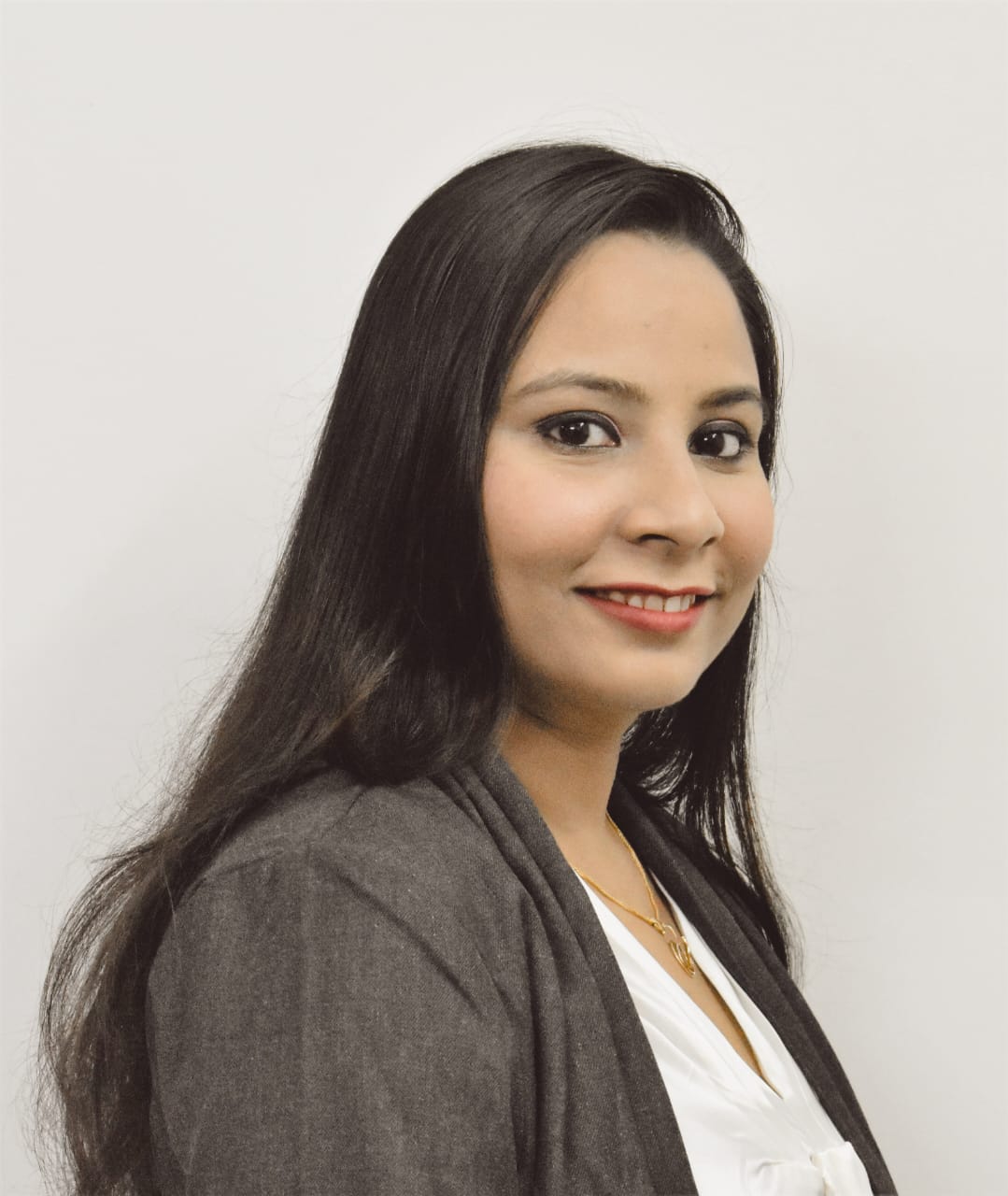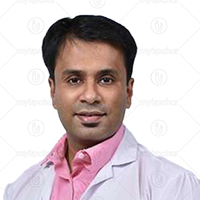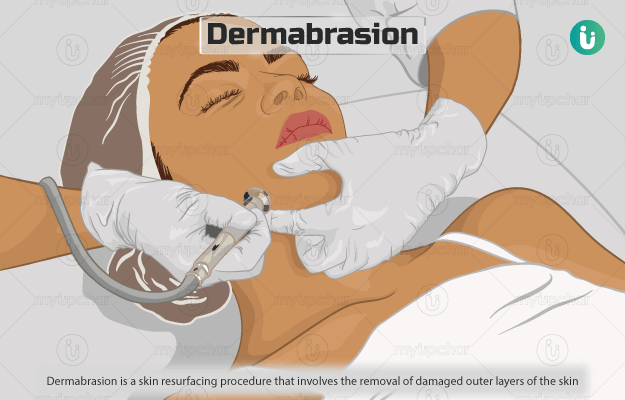Summary
Dermabrasion is a skin resurfacing procedure wherein the scarred or wrinkled outer layers of the skin are removed with the help of a high-speed rotating tool with an abrasive end piece (a wire brush or wheel embedded with diamond particles). The device injures and scrapes the damaged skin to allow the growth of new, healthy skin.
Dermabrasion can be done on any area of the skin; however, it is usually done on the face (either a small patch or entire face). The procedure lasts from a few minutes to more than 90 minutes. You will most likely be discharged on the same day.
A new, healthy, smooth skin layer will form over the treated skin in about seven to 10 days. You will be able to resume work two weeks after the procedure. Exposure to the sun after dermabrasion should be avoided or kept at a minimum as it can affect healing and lead to complications.
- What is dermabrasion?
- Why is dermabrasion recommended?
- Who can and cannot get dermabrasion?
- What preparations are needed before dermabrasion?
- How is dermabrasion done?
- How to care for yourself after dermabrasion?
- What are the possible complications/risks of dermabrasion?
- When to follow up with your doctor after dermabrasion?
What is dermabrasion?
Dermabrasion is a skin resurfacing procedure that involves the removal of damaged outer layers of the skin to promote the growth of new, healthier and smoother skin.
This procedure is employed to smoothen fine wrinkles, minimise scars from previous surgeries or accidents and, in some cases, to remove precancerous growths. It is most commonly carried out on the face, either on a small patch of skin or the entire face. Dermabrasion uses a high-speed rotating tool that has a rough wire brush or wheel with diamond particles as an end piece. The device is gently moved over the damaged skin until the wrinkle or scar becomes less visible. During the process, the tool injures the skin by wearing away the affected layer. As the skin on the treated area heals, a new, healthy layer of skin replaces the removed, damaged skin.
Dermaplaning is a similar procedure wherein an instrument called a dermatome that has an oscillating blade similar to an electric razor is used. The blades move up and down to remove layers of skin around craters (blemishes that look like holes and indentations in the skin) and other facial defects until the skin becomes even. This procedure is performed to treat deep acne scars.
Although neither of the procedures prevents ageing nor removes all the flaws and scars, they provide a smoother appearance to the skin. Dermabrasion and dermaplaning may be performed in isolation, or along with other procedures such as chemical peel or facelift.
Why is dermabrasion recommended?
This procedure is recommended to repair and renew skin in individuals with the following:
- Wrinkles
- Age spots (discoloured or dark patches on the skin)
- Tattoos
- Enlarged nose caused by a skin condition called rosacea
- Age-related skin growths
- Sun-damaged skin
- Precancerous growth
- Scars from a previous surgery, acne, chickenpox, or accidents
- Non Cancerous tumours
Who can and cannot get dermabrasion?
Dermabrasion is not performed in individuals with the following conditions:
- Active herpes simplex virus infection
- Active acne (procedure can be performed but with caution)
- Treatment with isotretinoin currently or in the past six months
- Excessive sensitivity to cold
- History of hypertrophic or keloid scars
- Recent procedure for brow lift or facelift
- Problems of the blood, skin or immune system that may affect the healing process
A surgeon may not perform this procedure on people with dark skin (Fitzpatrick skin type III or higher) as they are at a higher risk of developing dark patches after the procedure. Dermabrasion is not beneficial in cases of moles, birthmarks or burns.
What preparations are needed before dermabrasion?
You will need to visit the hospital a few days prior to the procedure for a preoperative consultation with the doctor wherein you will need to share the following details:
- Coexisting medical conditions
- Medical treatments or allergy to any medications
- Previous surgeries
- List of medicines you take including vitamins and herbs
- Use of tobacco products and alcohol
The surgeon will assess your general health and take photographs of your face for your health record. You will be provided with the following instructions to prepare for the procedure:
- Discontinue aspirin or other medications that affect the ability of the blood to clot prior to the procedure.
- Stop smoking at least one to two weeks before the procedure.
- Arrange a friend or family member to drive you home following the procedure.
- Depending on the type of anaesthesia planned for the procedure, you may be asked to fast for a few hours before the procedure. Fasting is recommended to prevent vomiting (a risk of general anaesthesia) during the procedure.
- Stay away from the sun for a few days prior to the procedure as it can cause permanent skin discolouration post dermabrasion.
- You will have to sign an approval form to grant permission for dermabrasion.
How is dermabrasion done?
After you arrive at the hospital, the hospital staff will provide you with a hospital gown. The procedure involves the following steps:
- Preparation: The surgeon will clean the area to be dermabraded with an antiseptic cleansing agent and mark it.
- Anaesthesia: You will have the following options for anaesthesia to keep you from experiencing pain during the procedure:
- Sedative (to make you drowsy) and local anaesthesia (a numbing medicine)
- A numbing spray (applied to freeze the area) with or without local anaesthesia
- General anaesthesia (to make you fall asleep for the duration of the procedure)
- Once your skin is numb, the surgeon will run the dermabrasion tool over it to scrape the outer layer.
- The scraping process is continued until the imperfections on the skin become less visible.
- Finally, the surgeon will cover the area of dermabrasion with a moist dressing or ointment to protect it during the healing process.
The procedure lasts from a few minutes to over 90 minutes, depending on the size of the area covered during the procedure. If the procedure is conducted under general anaesthesia, you may feel groggy or restless, have a dry mouth or sore throat when you regain consciousness. Patients are typically discharged on the same day of the procedure. However, if the surgeon thinks you need to be kept under observation for a while, he/she may ask you to stay overnight.
How to care for yourself after dermabrasion?
Although the treated skin will bleed after the procedure, it will gradually heal and blend with the surrounding skin. It is normal to experience the following after the procedure:
- Red, swollen skin
- Pain
- Burning or tingling sensation
- Difficulty while eating or speaking
- Itching on the face
You will be given the following instructions to protect the treated skin and take care of yourself at home after the procedure:
- Your surgeon will prescribe medication for pain relief in addition to antibiotic and antiviral medicines to prevent infection. Take them as directed.
- Make sure to keep the treated skin moist during the healing process. Follow the surgeon’s instruction to change the dressing.
- Crusts may form on the area of procedure during the healing process. Clean the skin frequently to remove the crusts and avoid infection.
- Avoid shaving the area of surgery until the skin heals; instead, use an electric razor when shaving for the first time following the procedure.
- Avoid exposure to the sun during the recovery period. Even after the treated skin has healed, minimise sun exposure and apply sunscreen regularly for at least three months.
- Do not expose your face to chlorinated water for a minimum of four weeks.
- Avoid contact sports or other vigorous activities for four to six weeks.
- Continue avoiding smoking for at least one to two weeks after the procedure as it can affect the blood supply to the new skin and delay the healing process.
- Avoid activities that could result in a direct injury or affect your face for at least two weeks.
- Avoid drinking alcohol for at least three to four weeks as it may cause you to experience redness on the face.
The swelling on the area of dermabrasion subsides within a week, while the skin heals in about seven to 10 days. You can restart your work in about two weeks after the procedure. The final results of the procedure will be visible after the swelling subsides and the skin heals completely. Your newly formed skin will have a pinkish colouration for about three months. You can use non-allergenic makeup during this period to conceal the changes in skin colour. Once the pink colour fades away, the new skin colour will match the surrounding skin. Although the new skin will be healthy and smooth, it will be virtually undetectable.
When to see the doctor?
Contact the surgeon at the earliest if you experience any of the following after discharge from the hospital:
What are the possible complications/risks of dermabrasion?
The risks/complications associated with the procedure include:
- Permanent discolouration of the skin due to sun exposure after the procedure
- Enlarged skin pores (temporary)
- Blood clots
- Breathing problems
- Tiny whiteheads on the treated skin (temporary)
- Allergic reaction to anaesthesia or other medicines
- Infection (rare)
- Development of excessive scar tissue
When to follow up with your doctor after dermabrasion?
Your surgeon will provide you with a schedule for follow-up appointments before discharging you from the hospital. It is essential to attend all the follow-up visits as it would help the surgeon to monitor the healing and regrowth of your skin.
Disclaimer: The above information is provided purely from an educational point of view and is in no way a substitute for medical advice by a qualified doctor.
Find Plastic, cosmetic and reconstructive surgeon in cities
- Plastic, cosmetic and reconstructive surgeon in Gwalior
- Plastic, cosmetic and reconstructive surgeon in Chennai
- Plastic, cosmetic and reconstructive surgeon in Gorakhpur
- Plastic, cosmetic and reconstructive surgeon in Raipur
- Plastic, cosmetic and reconstructive surgeon in Mumbai
- Plastic, cosmetic and reconstructive surgeon in Jaipur
Surgery Cost In Your City
Doctors for Dermabrasion

Dr. Raajshri Gupta
Plastic, Cosmetic & Reconstructive Surgery
8 Years of Experience

Dr. debraj shome
Plastic, Cosmetic & Reconstructive Surgery
9 Years of Experience

Dr. Chandan Sahu
Plastic, Cosmetic & Reconstructive Surgery
10 Years of Experience

Dr. Navdeep
Plastic, Cosmetic & Reconstructive Surgery
11 Years of Experience
References
- Michigan Medicine [internet]. University of Michigan. US; Dermabrasion
- Beth Israel Lahey Health: Winchester Hospital [Internet]. Winchester. Maryland. US; Dermabrasion
- American Society of Plastic Surgeons [Internet]. Illinois. US; Dermabrasion
- American Society of Plastic Surgeons [Internet]. Illinois. US; Dermabrasion
- Johns Hopkins Medicine [Internet]. The Johns Hopkins University, The Johns Hopkins Hospital, and Johns Hopkins Health System; Dermabrasion and Dermaplaning
- Cleveland Clinic [Internet]. Ohio. US; Age Spots
- Mount Sinai [Internet]. Icahn School of Medicine. New York. US; Dermabrasion
- Bedford L, Daveluy S. Skin Resurfacing Dermabrasion. [Updated 2020 Jul 31]. In: StatPearls [Internet]. Treasure Island (FL): StatPearls Publishing; 2020 Jan
- National Health Service [Internet]. UK; Having an operation (surgery)
- Hernandez A, Sherwood ER. Anesthesiology principles, pain management, and conscious sedation. In: Townsend CM Jr, Beauchamp RD, Evers BM, Mattox KL, eds. Sabiston Textbook of Surgery. 20th ed. Philadelphia, PA: Elsevier; 2017:chap 14.















